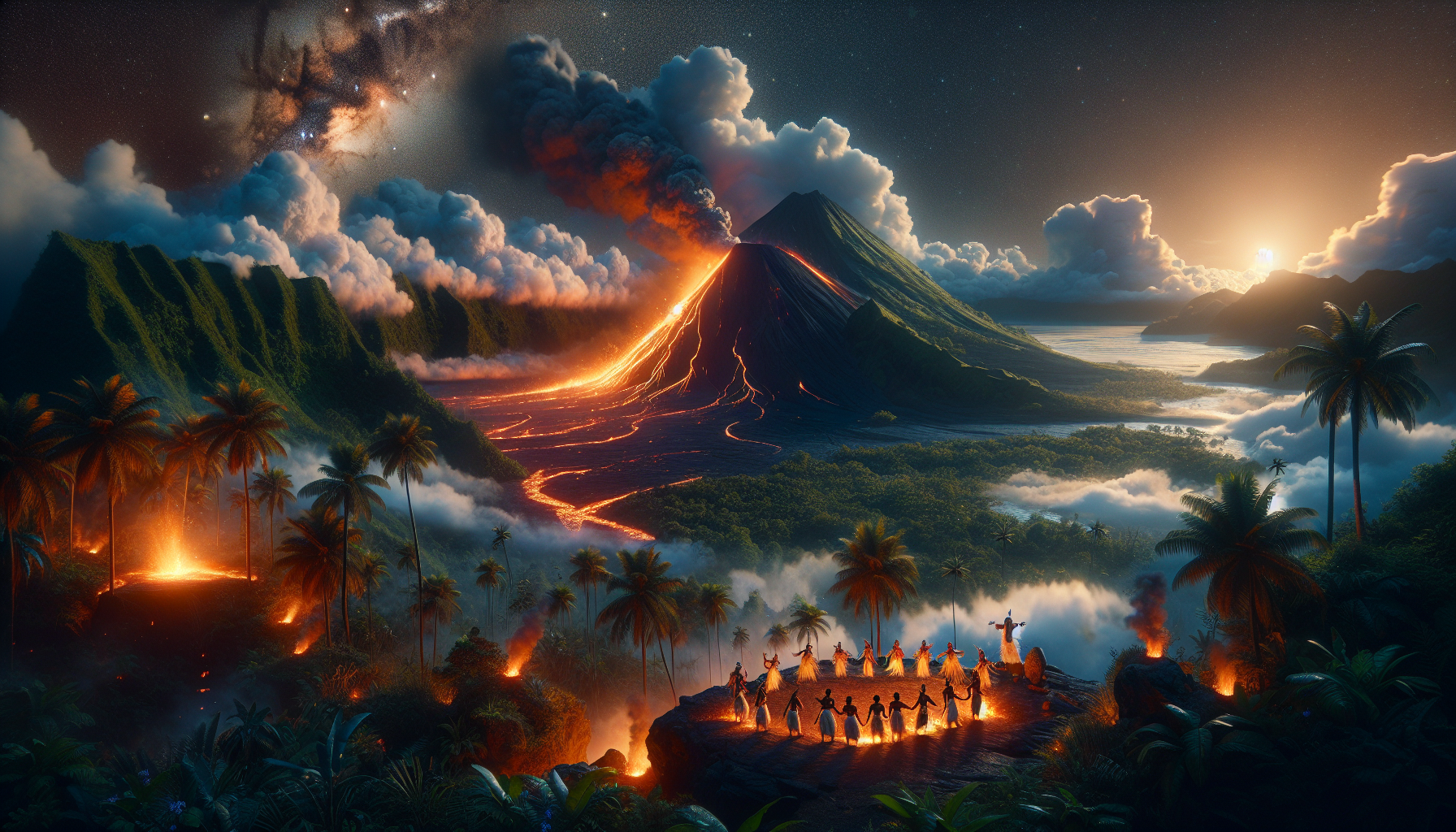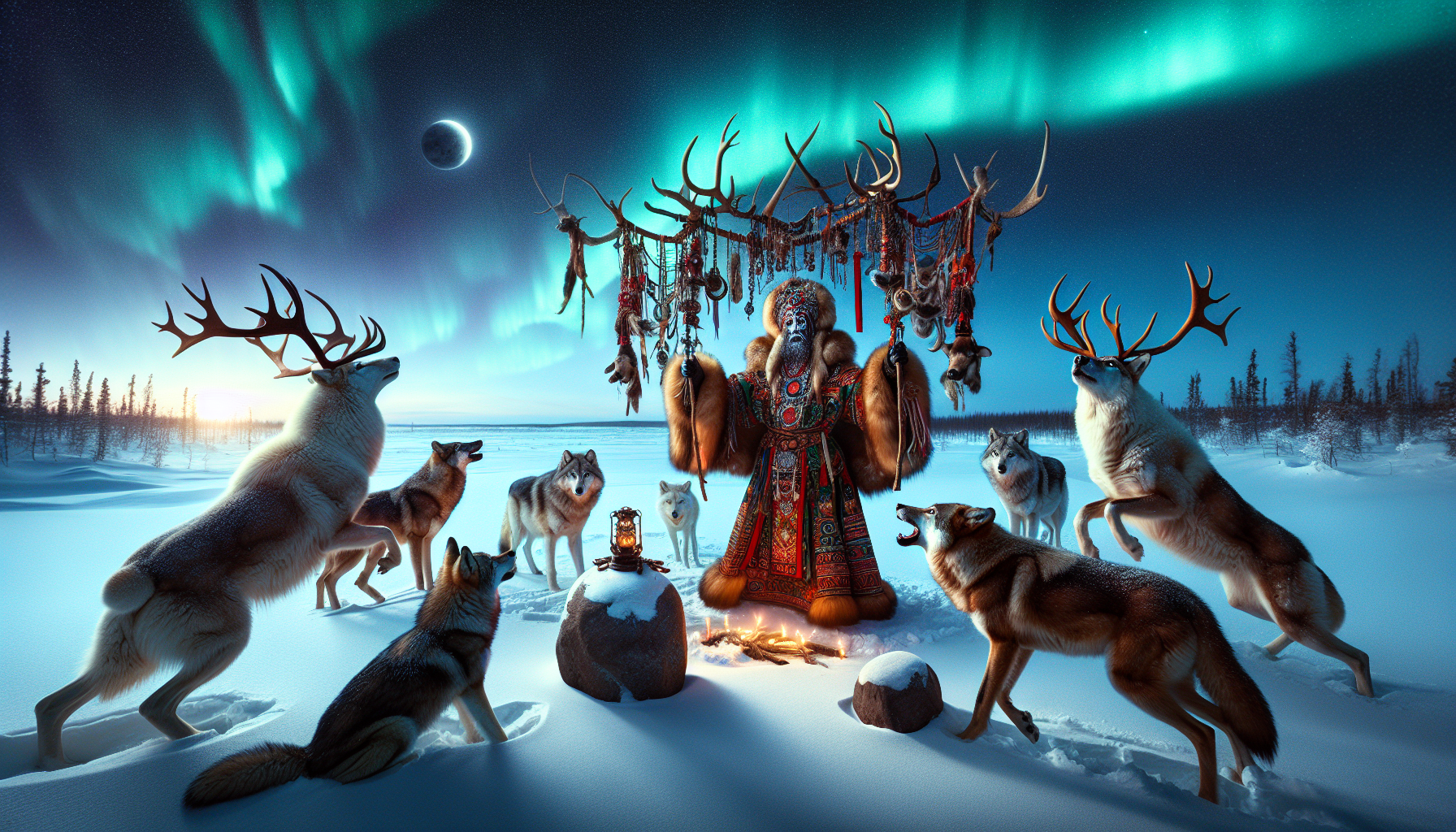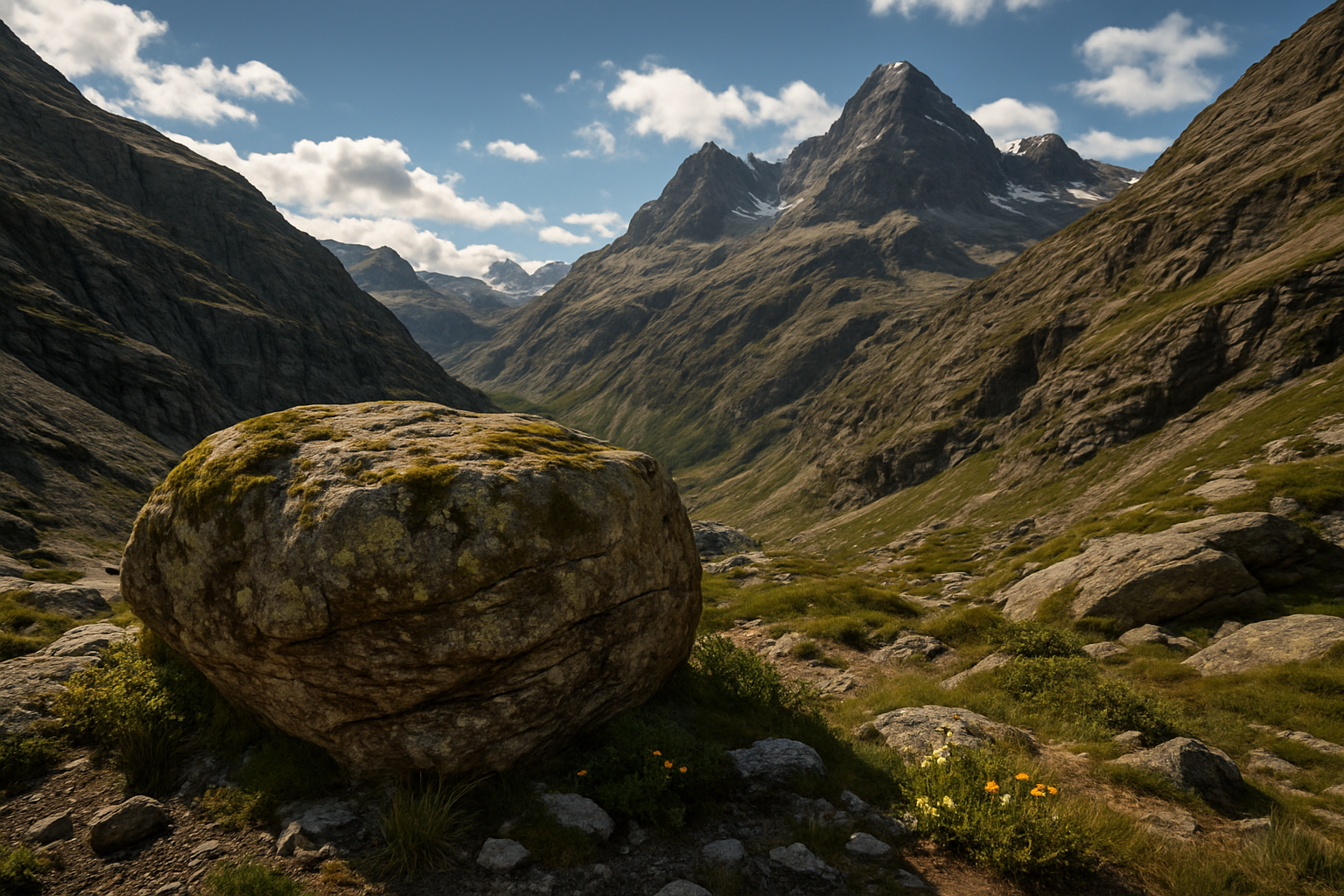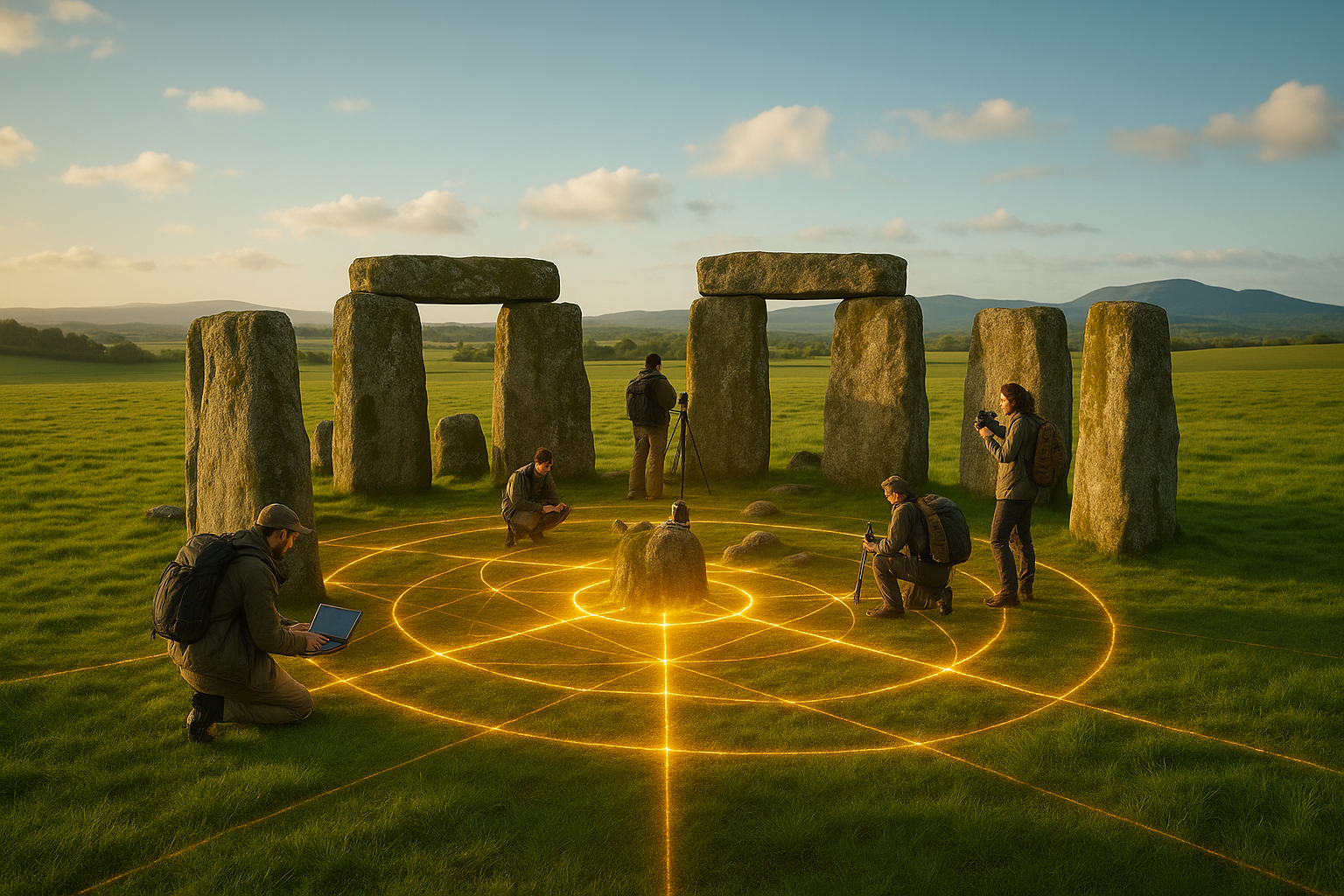Nestled in the vast, cerulean expanse of the Pacific Ocean lies a realm where earth, fire, and water converge in a mesmerizing display of natural artistry. The Polynesian islands, often celebrated for their idyllic beaches and lush landscapes, hold within their embrace the awe-inspiring phenomena of volcanoes—mighty sentinels that rise from the ocean’s depths, shaping the land and lives around them. In this exploration of “The Wrath and Beauty of Polynesian Volcanoes: Unveiling the Divine Power of Nature,” we embark on a journey to understand the formidable yet captivating essence of these geological wonders. 🌋
From the ancient legends whispered through generations to the scientific marvels they present, Polynesian volcanoes are steeped in a rich tapestry of history and culture. These volcanic formations are not mere geographical features; they are revered as deities in many Polynesian cultures, embodying both creation and destruction. The tales of Pele, the Hawaiian goddess of volcanoes, for instance, reflect a deep-seated respect and admiration for the raw power that shapes these islands. Through these narratives, we uncover how the native peoples of Polynesia have harmoniously coexisted with their fiery neighbors, weaving their existence into the very fabric of the islands.
As we delve deeper, we find that the wrath of these volcanoes, while fearsome, is matched by their breathtaking beauty. Imagine a night sky illuminated by the incandescent glow of molten lava, rivers of fire carving pathways through the landscape, and the ethereal sight of new land being born from the ocean’s embrace. These are scenes that defy the imagination, captivating and terrifying in equal measure. Through the lens of geology and environmental science, we will explore how these volcanic processes occur, the different types of eruptions, and the lasting impacts they have on the ecosystem and human habitation.
Yet, beyond their physical manifestations, Polynesian volcanoes serve as a poignant reminder of nature’s duality—its capacity to both nurture and obliterate. The fertile soils resulting from volcanic activity are a testament to this paradox, fostering diverse ecosystems and rich agricultural landscapes that sustain local communities. However, the threat of eruption looms ever-present, posing challenges that demand resilience and adaptation. By examining the innovative ways in which Polynesian societies have prepared for and responded to volcanic threats, we gain insight into the balance between vulnerability and strength in the face of nature’s might.
In this article, we aim to unravel the enigmatic allure of Polynesian volcanoes, traversing the realms of mythology, science, and human resilience. We will witness the dynamic interplay of destruction and creation, uncovering how these forces have shaped not only the physical landscapes but also the cultural and spiritual identities of the Polynesian people. Join us as we journey through this land of fire and water, where the wrath and beauty of volcanoes continue to sculpt a world both ancient and ever-evolving.
The Geological Genesis of Polynesian Volcanoes
Polynesia, an expansive region of the Pacific Ocean, is a true testament to the raw and untamed power of Earth’s geological forces. This vast area, stretching from Hawaii in the north to New Zealand in the south, and Easter Island in the east, is home to some of the most magnificent and dynamic volcanic landscapes on the planet. The formation of these volcanic islands is deeply rooted in the region’s unique tectonic setting, which is dominated by hot spots and tectonic plate movements. The volcanic activity in Polynesia is primarily the result of hot spot volcanism. Unlike other regions where volcanoes are typically found along tectonic plate boundaries, Polynesian volcanoes often emerge in the middle of tectonic plates. This phenomenon occurs when a mantle plume, or a column of hot, solid material, rises from deep within the Earth’s mantle to reach the crust. As the tectonic plate moves over the stationary hot spot, a series of volcanoes can form, creating island chains such as the Hawaiian Islands.
The geological characteristics of Polynesian volcanoes are varied and captivating. These volcanic islands are often characterized by shield volcanoes, which are broad and gently sloping structures formed by the accumulation of fluid lava flows. This type of volcanic structure is particularly prevalent in Hawaii, where Mauna Loa and Kilauea stand as iconic examples. The lava emitted by these volcanoes is typically basaltic, meaning it has a low viscosity and can flow easily, forming extensive lava fields. However, the region is not limited to shield volcanoes. Some islands, like those in Tonga and Samoa, are home to stratovolcanoes, which have steeper profiles and are built from alternating layers of lava and volcanic ash. These volcanoes are often associated with more explosive eruptions due to the higher viscosity of their lava, which can trap gases and lead to pressure build-up.
To fully appreciate the geological marvels of Polynesia, one must also consider the role of submarine volcanoes, which are less visible but equally significant. Many Polynesian islands began as underwater volcanoes that gradually grew until they breached the ocean surface. These submarine eruptions continue to shape the seafloor, contributing to the dynamic and ever-changing landscape of the Pacific Ocean. The interplay between volcanic activity and oceanic processes is a fascinating aspect of Polynesia’s geology, highlighting the interconnectedness of Earth’s systems. To delve deeper into this topic, check out the video below:
Understanding the Dynamics of Hot Spot Volcanoes – National Geographic
Cultural Significance and Mythology Surrounding Polynesian Volcanoes
The impact of volcanic activity in Polynesia extends far beyond the physical landscape, deeply influencing the culture and mythology of the indigenous peoples. For centuries, Polynesians have lived in close proximity to these formidable natural forces, developing a profound respect and reverence for their power. This relationship is reflected in the rich tapestry of myths, legends, and spiritual beliefs that surround volcanoes throughout the region. One of the most famous mythological figures associated with Polynesian volcanoes is Pele, the Hawaiian goddess of fire and volcanoes. According to Hawaiian legend, Pele resides in the craters of Kilauea, one of the most active volcanoes on Earth. She is revered as both a creator and destroyer, embodying the dual nature of volcanic activity. While her fiery temper can bring destruction, her eruptions also create new land, symbolizing renewal and the cyclical nature of life.
Similarly, in Māori mythology, the volcanic landscape of New Zealand’s North Island is attributed to the deeds of the demigod Māui. It is said that Māui harnessed the power of the sun to slow its journey across the sky, allowing the volcanic forces below to cool and solidify, forming the land. The reverence for volcanic forces is also evident in the traditional navigation practices of Polynesians. The indigenous people of the region are renowned for their sophisticated seafaring skills, which allowed them to traverse vast distances across the Pacific Ocean long before the advent of modern navigation tools. Volcanic islands served as crucial landmarks for these ancient navigators, guiding them on their voyages and facilitating the settlement of new lands.
Volcanic landscapes have also influenced Polynesian art and architecture. The use of volcanic materials, such as basalt and pumice, is prevalent in traditional carvings, sculptures, and building constructions. These materials are not only valued for their durability but also for their spiritual significance, as they are seen as gifts from the gods. The cultural significance of Polynesian volcanoes is a testament to the deep connection between the people of the region and their natural environment. It highlights the importance of understanding and respecting the forces of nature, and how these forces shape both the physical and cultural landscapes. Explore more about Polynesian mythology in the video:
Pele and the Myths of Hawaiian Volcanoes – Mythology & Fiction Explained
Ecological Impacts and Biodiversity of Polynesian Volcanic Islands
Polynesian volcanic islands are not only geological and cultural treasures but also ecological havens that host a remarkable diversity of life. The unique environmental conditions created by volcanic activity have given rise to distinct ecosystems that support a wide range of flora and fauna. The isolation of these islands in the vast Pacific Ocean has resulted in high levels of endemism, meaning many species are found nowhere else on Earth. The soils of volcanic islands are particularly fertile due to the breakdown of volcanic rock and ash, which releases essential nutrients. This fertility supports lush vegetation and diverse plant communities. Rainforests, grasslands, and shrublands thrive on these islands, providing habitats for a variety of animal species. Birds, insects, and reptiles are especially abundant, with many species having evolved in isolation, adapting to the specific conditions of their island habitats.
Marine ecosystems surrounding these volcanic islands are equally rich in biodiversity. Coral reefs, seagrass beds, and mangroves flourish in the warm, nutrient-rich waters, supporting an array of marine life. These ecosystems are vital not only for biodiversity but also for the livelihoods of local communities, as they provide food, tourism opportunities, and coastal protection. However, the ecological balance of Polynesian volcanic islands is delicate and increasingly threatened by human activities and climate change. Deforestation, invasive species, and pollution pose significant risks to the islands’ biodiversity. Additionally, rising sea levels and increasing temperatures threaten both terrestrial and marine ecosystems. Efforts to conserve and protect these unique environments are crucial to maintaining the ecological integrity of the region.
Conservation initiatives, such as habitat restoration, invasive species management, and community-based conservation programs, are being implemented across Polynesia. These efforts aim to preserve the natural beauty and biodiversity of volcanic islands while promoting sustainable development practices. By safeguarding these ecosystems, we can ensure that future generations will continue to experience the wonder and majesty of Polynesia’s volcanic landscapes. For an in-depth look at the biodiversity of volcanic islands, watch the following video:
The Biodiversity of Pacific Islands – Nature on PBS
Comparative Table of Polynesian Volcanoes
To further understand the diversity and characteristics of Polynesian volcanoes, examine the comparative table below. This table highlights some of the most notable volcanoes in the region, including their type, location, and notable features. 🌋
| Volcano | Type | Location | Notable Features |
|---|---|---|---|
| Mauna Loa | Shield | Hawaii, USA | One of the largest volcanoes on Earth by volume; frequent eruptions. |
| Kilauea | Shield | Hawaii, USA | One of the most active volcanoes on Earth; significant cultural importance. |
| Mount Ruapehu | Stratovolcano | New Zealand | Active volcano with a crater lake; popular skiing destination. |
| Tonga | Submarine | Tonga | Part of the Tonga-Kermadec volcanic arc; frequent underwater eruptions. |
By exploring this table, you can gain a deeper appreciation for the varied volcanic landscapes of Polynesia and the geological forces that shape them. For a visual exploration of these volcanoes, consider watching related documentaries and educational content on platforms like YouTube.

Conclusion
In wrapping up our exploration of the magnificent and formidable nature of Polynesian volcanoes, we find ourselves at the intersection of natural wonder and cultural reverence. These geological formations are not merely landscapes but living embodiments of the divine, revered and respected by the Polynesian cultures that have thrived in their shadows for centuries. Our journey through this article has illuminated several key aspects of these volcanic giants, from their geological origins and eruptive behaviors to their deep-seated cultural significance and the modern-day implications of their power.
To recapitulate, we began by examining the geological foundation of Polynesian volcanoes, understanding their formation through tectonic activity and hotspot volcanic processes. These volcanoes, scattered across the Pacific, are primarily shield volcanoes, characterized by their broad, gentle slopes and effusive eruptions. Their formations have contributed significantly to the archipelagos’ unique landscapes, creating diverse ecosystems that host a rich tapestry of flora and fauna.
We then delved into the cultural significance of these volcanoes, exploring how they are woven into the spiritual and daily lives of Polynesian peoples. Many Polynesian myths and legends are steeped in the imagery and power of volcanoes, often personified as deities or powerful ancestral spirits. This cultural perspective fosters a deep respect and symbiosis with nature, a worldview that promotes harmony and sustainability—an invaluable lesson for modern societies grappling with environmental challenges.
Our discussion also touched upon the scientific advancements in monitoring and understanding volcanic activity. The integration of traditional knowledge with modern technology offers a comprehensive approach to disaster preparedness and risk mitigation. This synthesis not only enhances scientific understanding but also empowers local communities, enabling them to respond effectively to volcanic events while preserving their cultural heritage.
In the contemporary context, Polynesian volcanoes are not only a source of awe but also a reminder of the dynamic and sometimes destructive forces of nature. As climate change and environmental degradation continue to impact the planet, understanding these natural phenomena becomes even more crucial. The resilience and adaptability of Polynesian cultures in the face of volcanic threats provide a blueprint for navigating the complexities of living in harmony with our environment.
The narrative of Polynesian volcanoes is a testament to nature’s dual capacity to create and destroy, inspire and intimidate. As we contemplate the wrath and beauty of these natural wonders, we are reminded of our responsibility to respect and protect the environment. It is a call to action for individuals, communities, and nations to prioritize ecological stewardship and cultural preservation.
As we conclude, I encourage you, dear reader, to reflect on the lessons from Polynesian volcanoes and consider how these insights can be applied in your own life and community. Whether through advocating for sustainable practices, supporting cultural preservation initiatives, or simply appreciating the natural world around you, your actions can contribute to a more balanced and respectful relationship with nature.
Share your thoughts, experiences, and insights on this topic in the comments below. Engaging in dialogue helps to broaden our understanding and fosters a community of learning and growth. Additionally, feel free to share this article with others who might be inspired by the majestic and powerful story of Polynesian volcanoes.
For further exploration into the fascinating world of volcanoes and their cultural significance, you may find these resources enlightening:
1. Smithsonian Global Volcanism Program
2. US Geological Survey Volcano Hazards Program
Thank you for joining this exploration of the wrath and beauty of Polynesian volcanoes. May this knowledge inspire a deeper appreciation for the divine power of nature and our integral place within its grand tapestry. 🌋✨
Toni Santos is a visual storyteller and symbolic naturalist whose creations explore the hidden ecologies and forgotten bonds between humans and nature, as whispered through ancient lore. Through an intuitive and myth-sensitive lens, Toni reveals the sacred choreography between flora, fauna, and human spirit — a world where trees once spoke, rivers remembered, and every herb carried a secret name.
His journey is rooted in the esoteric — in the rituals of forest-dwellers, the botanical codes of shamans, and the unspoken pacts that shaped how ancient peoples lived in deep, reciprocal harmony with the natural world. From sacred groves to serpent-guarded springs, each of Toni’s works reflects a symbolic relationship long obscured by modern forgetfulness.
With a background in visual design and ancestral aesthetics, Toni merges storytelling with sacred ecology. His pieces don’t simply illustrate — they channel. Drawing from myth, mysticism, and lost herbal traditions, he crafts visuals that resonate with the old wisdom: that nature is not background, but kin.
As the creative spirit behind Vizovex, Toni shares collections, visual studies, and articles that illuminate the occulted connections between human life and the wild world. His work calls on us to remember — not just with the mind, but with the senses and the soul — the profound dialogues our ancestors once had with earth, plant, and animal.
His work is a tribute to:
The mythic language of trees, stones, and roots
Forgotten pacts between healers and the wilderness
The sacred knowledge carried in nature’s unseen patterns
Whether you’re a seeker of ancient plant-lore, a mystic attuned to seasonal cycles, or simply someone who hears the forest speak, Toni welcomes you to wander a space where symbolism, nature, and spirit entwine — one myth, one leaf, one vision at a time.





